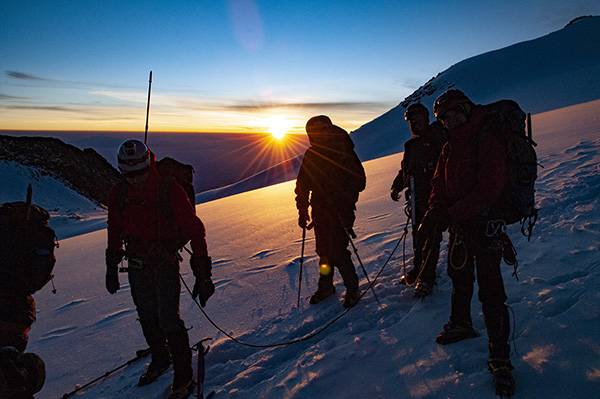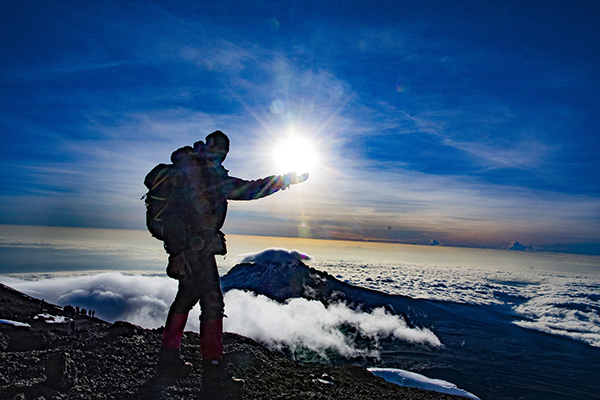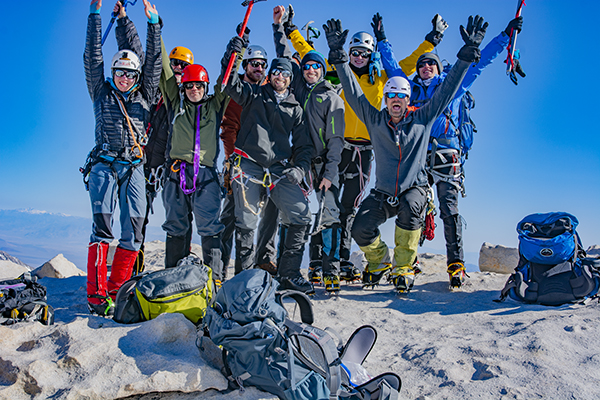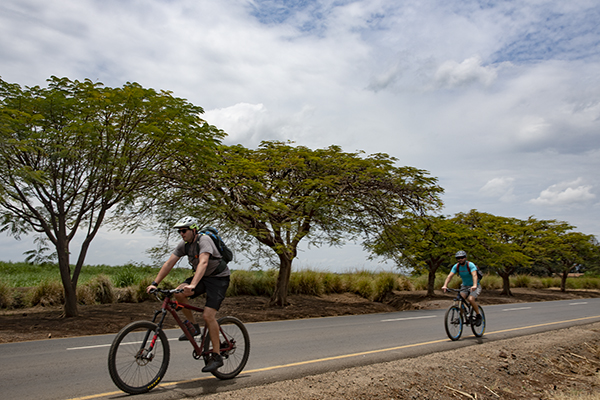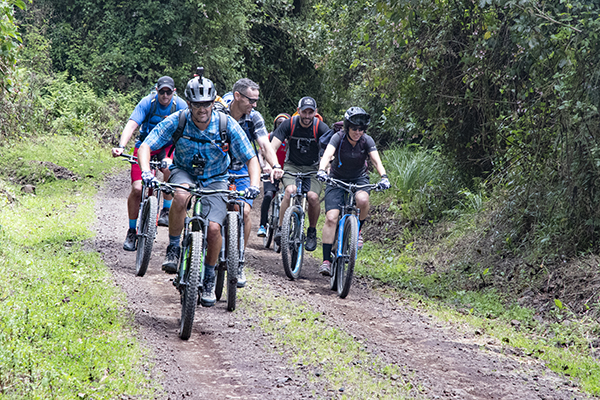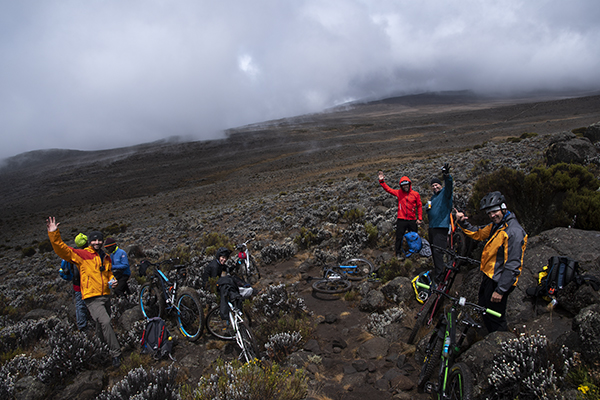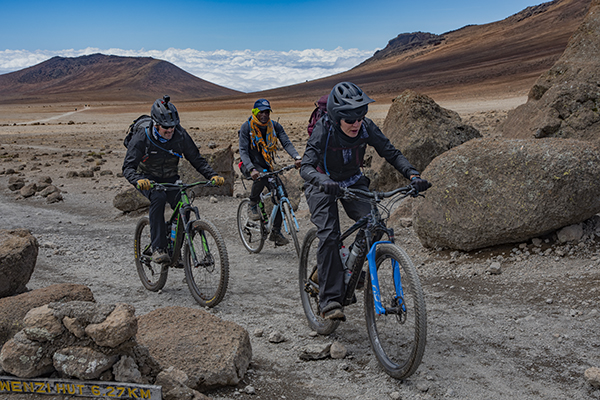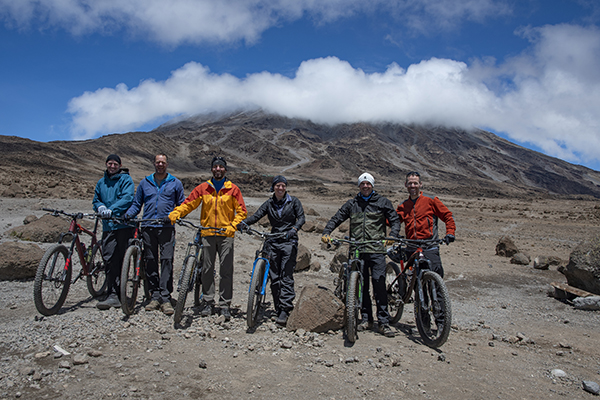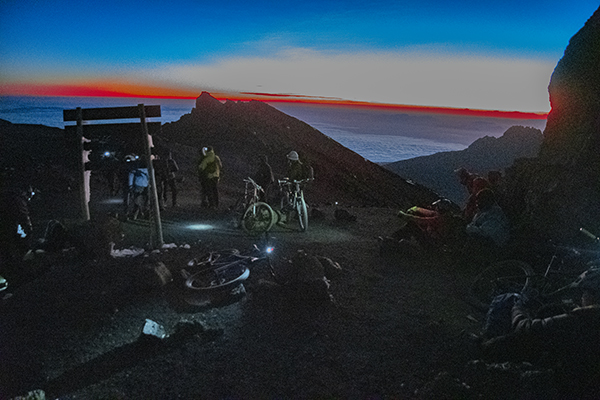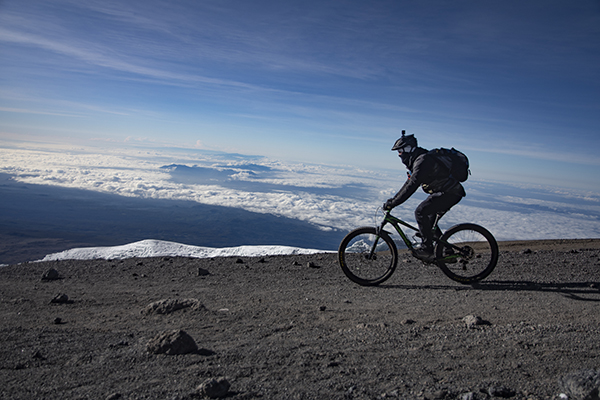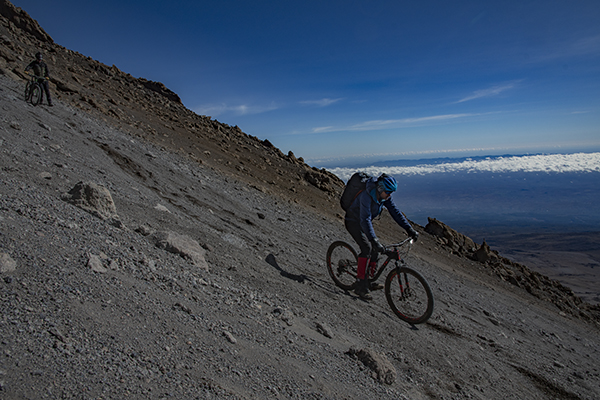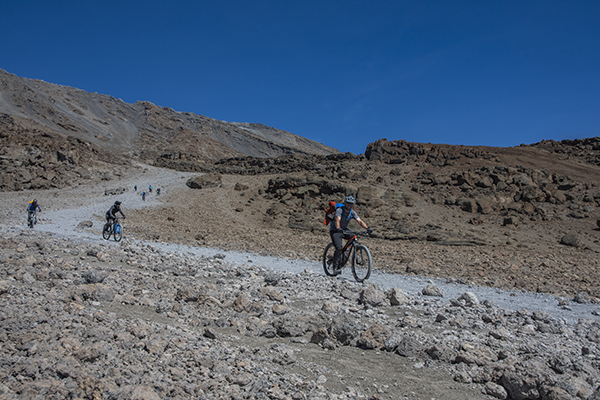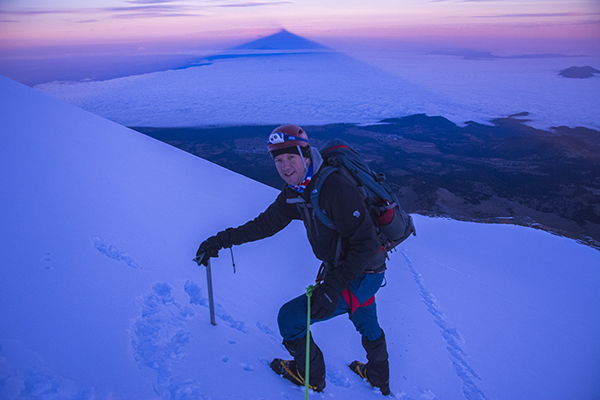
Training for mountaineering is critical for safety and success
What Is Mountaineering?
Mountaineering is the pursuit of recreation in the mountains. This can take many forms: peak ascents, hiking, rock climbing, ice climbing, trail running, backpacking, and skiing, to name a few. Mountaineering is an all-encompassing word for all of these activities, with each of them being a subset of the whole.
Mountaineering often requires performing at a variety of intensity levels at high elevation in changeable weather. Proper training is the foundation for executing a safe and rewarding climb. While each of these activities may require a specific skill set, they all require a combination of movement efficiency, strength, and endurance.

PERFORMANCE =
Movement Efficiency + Strength + Endurance
Training For Mountaineering – Movement Efficiency
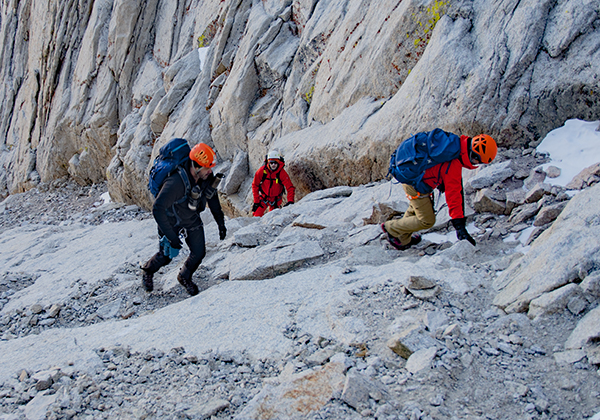
Performance in the mountains is highly dictated by movement efficiency. An efficient climber with low current fitness will always outperform a fit climber with poor movement skills.
When training for mountaineering, the most effective way to become efficient with your movement is to log time on the type of terrain you’d like to perform on. This is critical for success. Take every opportunity to train on terrain that resembles your objective as closely as possible. This includes walking on trails, soft snow, firm snow, talus (boulder fields), and loose off-trail terrain. It also includes technical terrain if your objectives include rock or ice climbing.
There are no shortcuts for developing movement efficiency. It takes time. The more time you spend on complex terrain the greater your gains will be. This is a much overlooked but critical component to consider when developing your training plan.


Training For Mountaineering – Strength
Strength supports all other athletic activity because it allows you to do MORE objective specific training by developing tissue capacity. Strength training:
- Makes bones, muscles, tendons and cartilage stronger, thicker and stiffer.
- Develops effective and efficient transfer of force.
- Creates a ceiling of capacity thus reducing the likelihood of injury.
- Increases endurance by developing a higher ceiling of potential
Strength and endurance are strongly linked
Reaching the summit of a mountain requires taking thousands of steps uphill. Each uphill stride while wearing a 30lb pack places significant stress on the legs, knees, hips, and spine. This movement is essentially a single leg squat done at varying depths, which is dictated by the steepness of the terrain. Therefore, successfully summiting a peak entails linking together thousands of these weighted squats. Effective training in a gym will help make each step in the mountains use less energy because you’re developing a surplus of strength.
For example: “Marvelous Martha” and “Mountaineer Mike” are on a 12-hour summit day together. They will take thousands of steps, each of which pushes them towards their strength ceiling.
Marvelous Martha can back squat 160-pounds for 5 reps. Every step she takes uphill wearing a 30-pound pack uses approximately 25% of her strength reserve. She’s working at 1/4 of her strength ceiling for this climb.
Mountaineer Mike can back squat 60-pounds for 5 reps. Every uphill step he takes wearing a 30-pound pack uses 66.67% of his strength reserve. He’s spending the entire day working at 2/3 of his strength ceiling!
Which climber is more likely to perform better, all other things being equal?

Training For Mountaineering – Endurance

The goal with endurance training for mountaineering is to develop a program that progresses towards the physical requirements of our specific objectives. Endurance training accomplishes two things:
- Develops the cardiovascular and circulatory systems to effectively supply oxygen to the working muscles.
- Builds structural resilience in the joints (especially the hips and knees) and spine to handle the stress of the objective.
As with strength training we build endurance through the stress/recovery/adaptation model. Each training session places stress on the body. With appropriate recovery, the body adapts and can support slightly more work. With a well thought out schedule, the body will continue to adapt to the new training load and your endurance will improve.
For example, your goal is to climb Mt. Whitney in 2-days via the Mountaineers Route. This climb requires ascending and descending from 8350′ to 14505′ over 14-miles. This is 6155′ of elevation gain over 7-miles to the summit, then the equivalent distance and elevation loss to return. Attempting this climb “off the couch” with no training will put the body into a state of deep fatigue with a high chance of sustaining an injury. However, starting with a manageable hike then gently increasing the distance and elevation, then allowing for adequate recovery between sessions, the body develops the capacity and resilience to climb Mt. Whitney safely, and have much more fun doing it!
Know your aerobic threshold
The most efficient way to develop endurance is to use a slow, steady approach maintaining a heart rate under your aerobic threshold. There are many methods for determining your aerobic threshold, but a great place to start uses the ‘Maff Method’ by subtracting your age from 180. In this method a 40-year old’s aerobic threshold is a heartrate of 140 (180 – 40). A 40-year-old athlete would stay at a heart rate of 140 or below when training.
Training at or just under the aerobic threshold:
- Develops the strength, size and pumping capabilities of the heart.
- Enhances the structure of the capillary network throughout the body.
- Develops metabolic adaptions to the mitochondria; the powerhouse of the muscle cells.
- Increases the body’s effective use of fuel/food for energy at the objective pace at which you intend to climb.
To cross-reference this intensity you should be able to have a full conversation when training. If you cannot speak with complete sentences, then it’s likely you’ve moved above your aerobic threshold sweet-spot. Keep in mind, this is a great place to start and a good trainer can refine this and personalize a training plan based on your history and trajectory.

Progression Is Paramount!
Progression is one of the KEY elements in any training plan. An appropriate progression allows the body to absorb the training, recover, then adapt to a new level of performance. For the body to gain strength and endurance we need to continually add stress to our training.
For endurance training, unlike strength training, we generally add volume rather than intensity to build our progression. Each week we add distance and/or elevation to our hikes/runs. On the first week of our training cycle we might complete 3 endurance sessions at or near our aerobic threshold heart rate:
- 1st Session: A comfortable 5-mile hike carrying a packed loaded with 20-pounds and 1000′ of elevation gain on terrain as close as possible to our season objective. This hike took 2.5 hours.
- 2nd Session: 4-mile trail run with 1000′ of elevation gain. This run took 1.5 hours
- 3rd Session: 6-mile jog around the city. This run took 1.5 hours.
Week 1 totals: 5 hours in the aerobic zone with 2000′ feet of elevation gain.
2nd Week: Add 5-10% to this total.
3rd Week: Continue this progression moving towards your objective time/distance/elevation. You can use distance or time to build your progression. Both are effective.
Week 3 or 4: Rest week with a reduction in volume of 40%.
Final weeks: Leading up to your objective taper and cut the volume down by 20-30% per week.
What about high-intensity training?
High Intensity Interval Training (HIIT) is more specialized and complicated and therefore needs to be delicately programmed into your plan. Although useful in small amounts for specific circumstances, following the above recommendations will develop a high level of performance for mountaineering. HIIT does not replace slow steady training in an endurance program. Because of this HIIT is viewed at the icing on the cake but not something to be emphasized.
What about core training?
Isolated core exercises have very limited cross-over to sport specific performance in spite of what many in the fitness industry assert. The strength program suggested above with the squat/pull/press will strengthen muscles in the body to work effectively because they will work together. Beyond this, effective development of the core is achieved by practicing the sport you’re training for. A rock climber develops effective core tension by rock climbing. There are certain circumstances when a specific core strength exercise might be useful and a trainer can help work through a specific problem. If there’s not a good reason for doing it, then it’s not worth spending the resources on it.
In Conclusion
We encourage you to enjoy the process of developing an understanding of how your body responds to training. The results will become apparent within weeks of starting out and motivation is rarely a problem moving forwards.
About the Authors



